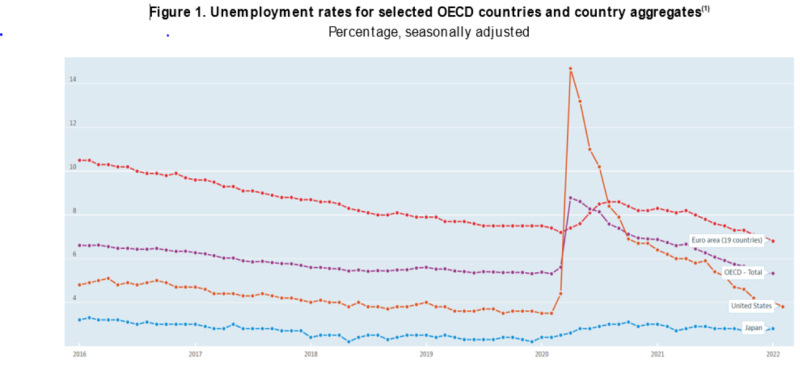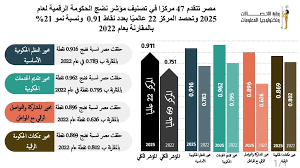By : Nahla Makled
The monthly unemployment rate in the OECD area was stable at 5.3% in January 2022, the same rate that was recorded in February 2020 just before the pandemic (see Figure 1) and the lowest level since the start of the series in 2001. The number of unemployed workers in the OECD, at 35.9 million remained only 0.3 million above the pre-pandemic level.
In January, the OECD area unemployment rate for women declined to 5.5% (from 5.6% in December), while it was stable among men at 5.2% (see Figure 2). Nevertheless, just half of OECD countries reported a lower unemployment rate for men than women.
The OECD area youth unemployment rate (people aged 15 to 24) increased to 11.3% in January 2022, from 11.2% in December.
In the euro area, the unemployment rate fell further in January, to 6.8% from 7.0% in December 2021, with declines of 0.2 percentage point or more in Estonia, France, Italy, Luxembourg, Slovenia and Spain and rises of 0.2 percentage point or more in Greece, Lithuania and Portugal (see Table 1). In the euro area, the youth unemployment rate fell to 13.9% from 14.2% in December, continuing its downward trend.
The unemployment rate in January fell by 0.3 percentage point in Mexico and by 0.2 percentage point in Israel and Korea, while it increased by 0.5 percentage point in Canada, 0.3 percentage point in Colombia, 0.2 percentage point in Denmark, and 0.1 percentage point in both Japan and the United States. More recent data show that in February 2022 the unemployment rate declined by 0.2 percentage point in the United States (to 3.8%).
It should be noted that the unemployment rate conceals the extent of the unmet labour demand as some non-employed people may be “out of the labour force”, and hence not captured by the unemployment rate, either because they are not actively looking for a job or are not available to work.














































































